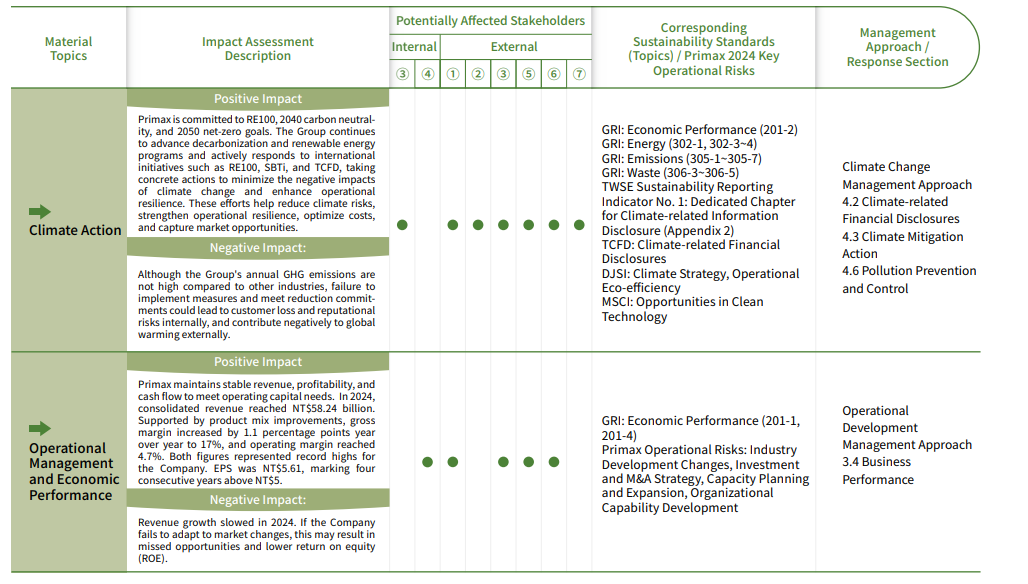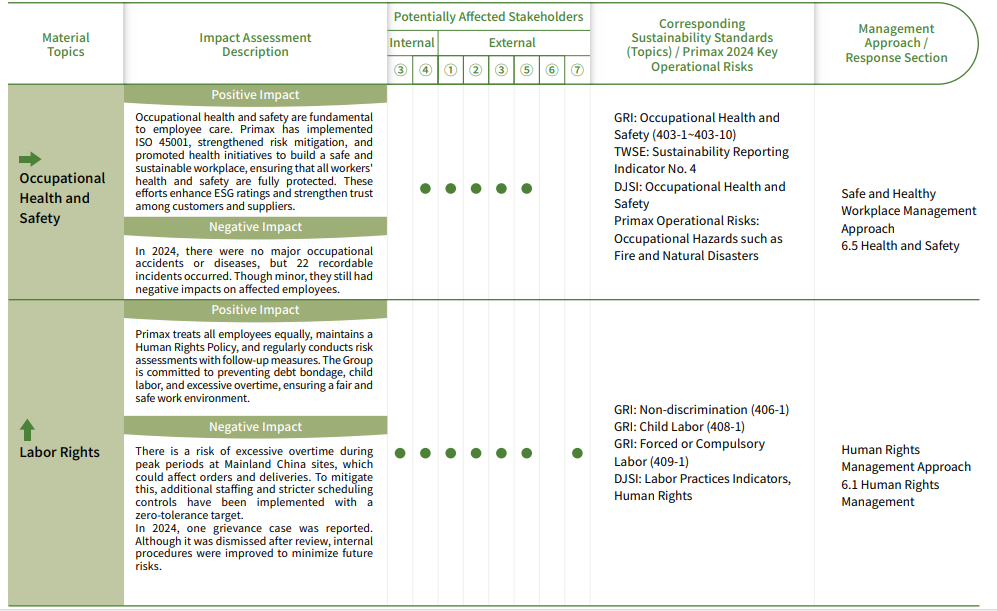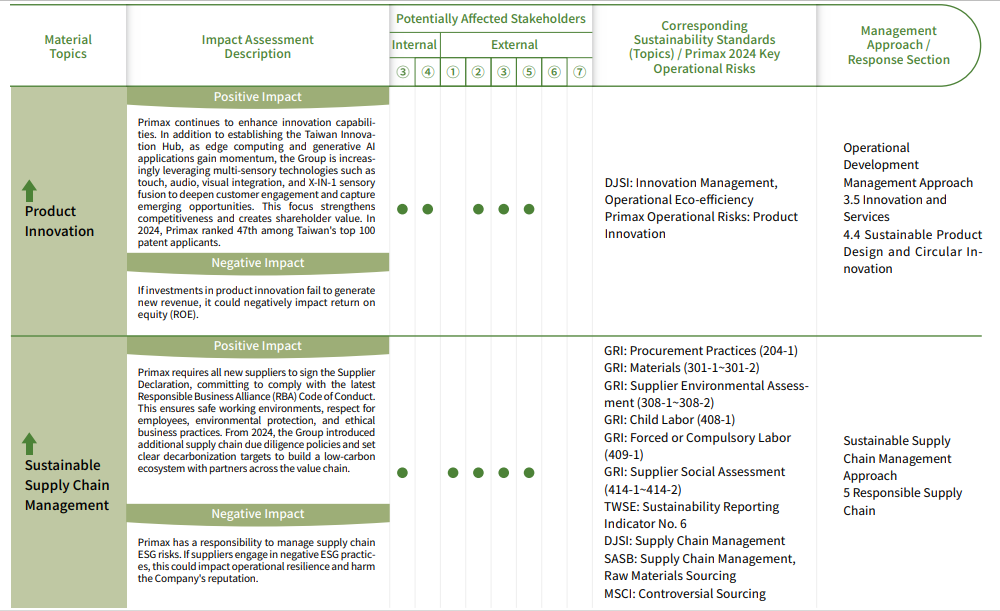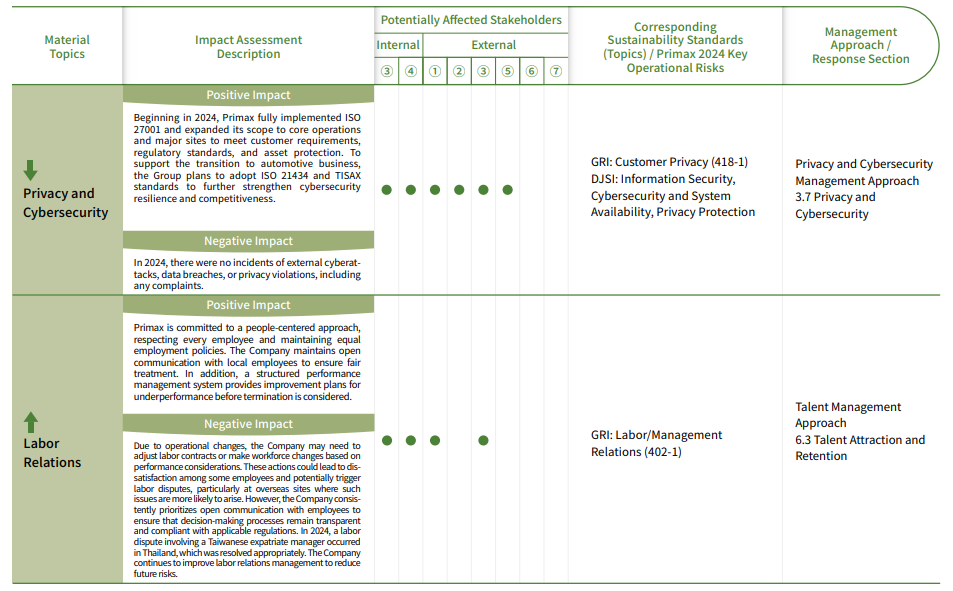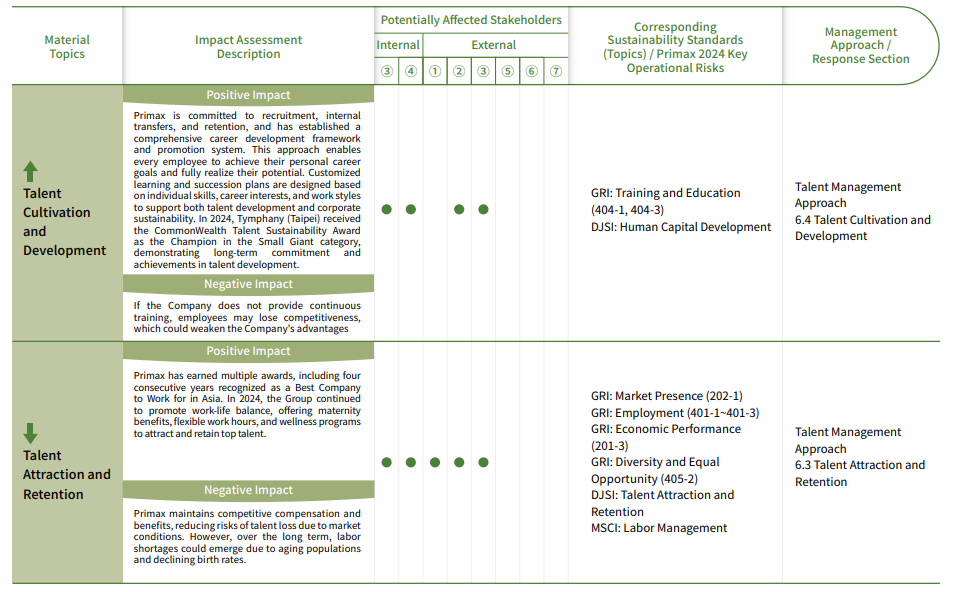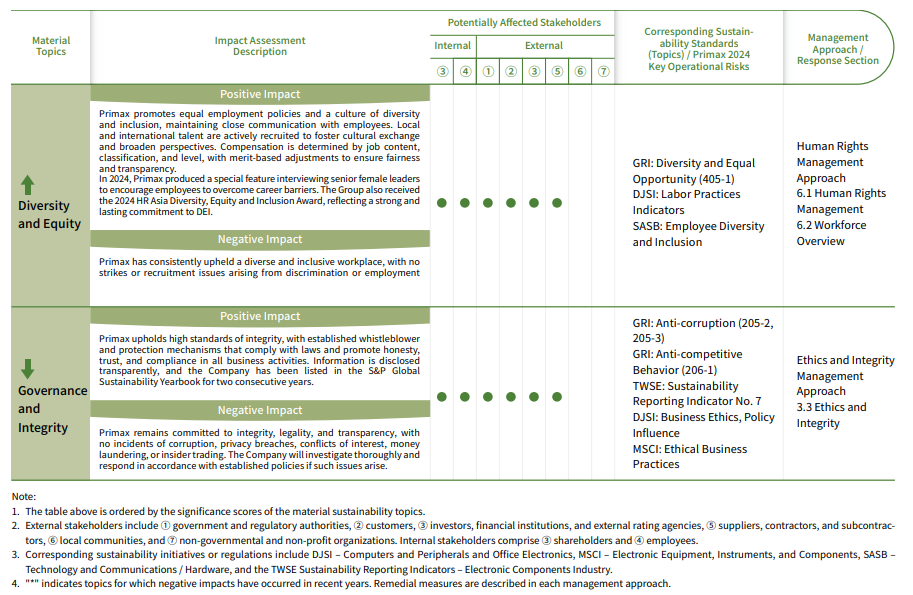Stakeholder Engagement
For Primax’s stakeholders, we have planned rigorous identification and selection method. In reference to the relevance and upstream & downstream segments of the chain value and business, we took an inventory of the population of Primax’s stakeholders. In addition to the five principles of the AA 1000 Stakeholder Engagement Standards (SES): "Dependency, Responsibility, Influence, Diverse Perspectives and Tension," we also assessed the stakeholders actually or potentially affected by various ESG issues management of Primax from the perspective of individuals or groups whose interests are or may be affected by the organization's economic activities, in accordance with the definition of stakeholders under the GRI Standards ( 2021 ). Review and adjustment will also be performed on a yearly basis.
This year, the ESG Office's assessment result shows that there is no significant change in the main stakeholders of Primax from the previous year, including government agencies/competent authorities, customers, shareholders/ investors/financial institutions/external rating institutions, employees, suppliers/contractors/outsourced business, local communities, and non-governmental organizations/non-profit-seeking organizations.

Communication with and response to stakeholders
Primax places great importance on the interests and opinions of stakeholders and engages in continuous communication and engagement. The engagement approach adopts diverse forms, including unilateral, bilateral, one-to-many, or many-to-one, with the aim of understanding stakeholders' concerns and expectations towards Primax. The ESG Office conducts biannual communication with key representatives of various stakeholder groups, gathering their perspectives on sustainability issues and identifying any significant impact events. The consolidated report from these engagements serves as a reference for identifying material issues and is regularly presented to the Board of Directors.
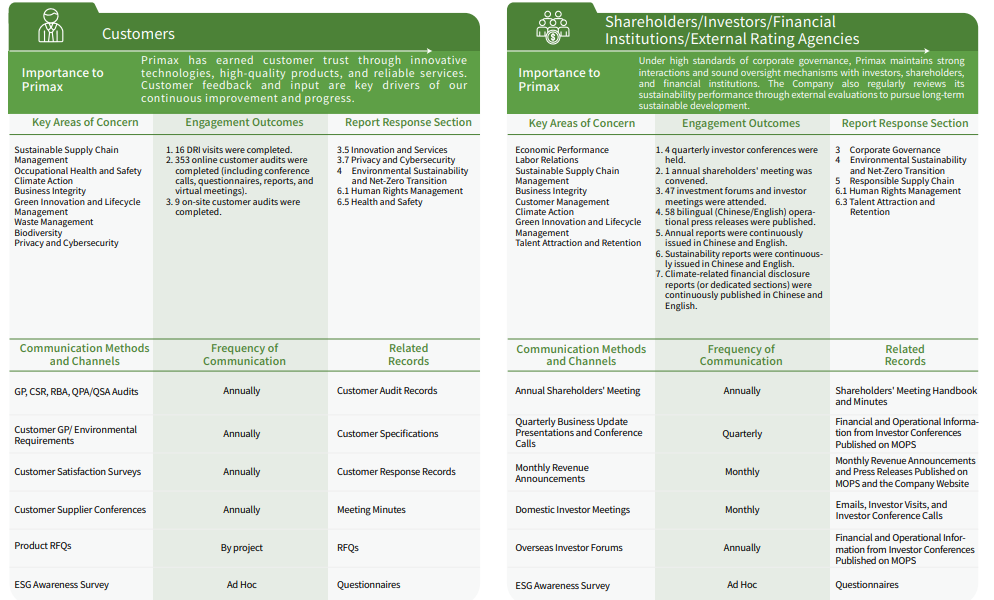
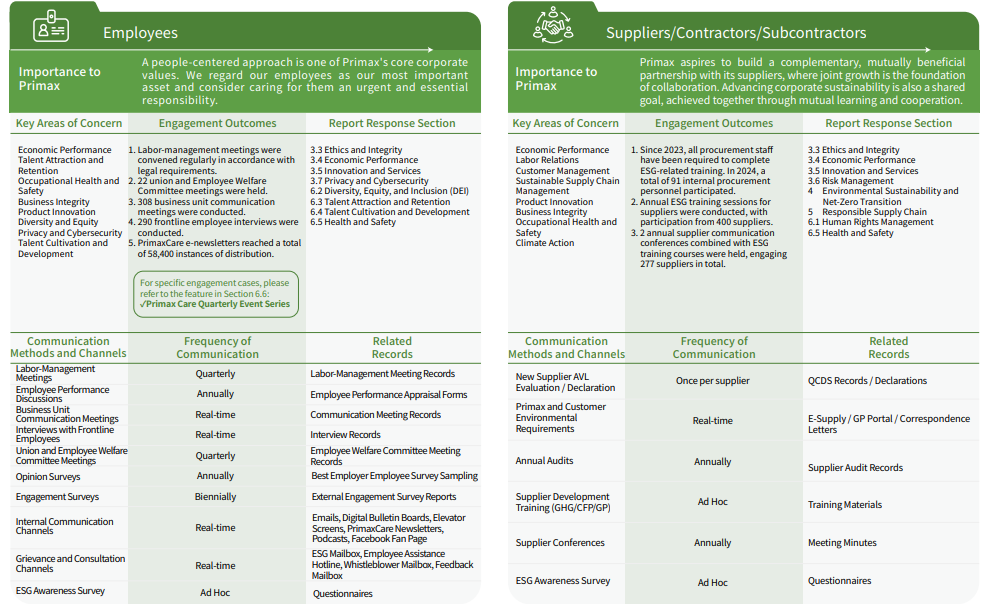
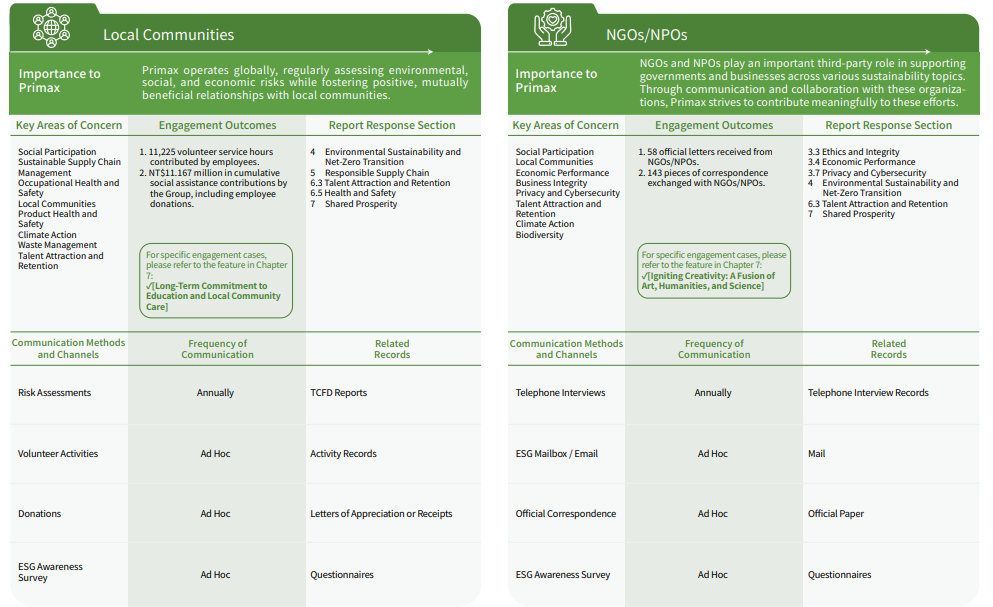

A convenient complaint and reporting channel
Primax has established the "Operational Procedures for Ethical Managementand Guidelines of Conduct," "Employee Communication and Feedback Management Measures," and "Employee Code of Conduct." We have also set up Business conduct complaint mailbox and reporting channels to facilitate communication and feedback from internal and external stakeholders.
Externally, we have a dedicated ESG (Environmental, Social, and Governance)sustainable website section that includes an ESG mailbox as a communication channel with external stakeholders. This mailbox allows stakeholders to raise any questions, suggestions, complaints, reports of misconduct, or other relevant matters related to Primax Electronics. It is managed by the ESG Office, which is responsible for handling the received correspondence and messages, notifying relevant internal departments for evaluation and response, and maintaining openand constructive communication. In 2024, the ESG mailbox received a total of 232 messages, encompassing proposals for public welfare initiatives, product-related inquiries, research collaboration, and other forms of cooperation. Among these, two submissions involved complaints regarding business practices between suppliers and personal conduct by family members of employees. Following investigation, the Company provided responses and referred the matters to the appropriate departments for subsequent handling.
Internally, we provide diverse employee communication channels. If any employee is unsure whether a situation violates applicable laws, regulations,binding policies, or company norms, they can seek advice and assistance from supervisors, human resources, or legal departments. While protecting employees' rights and interests, the Company also aims to sustain constructive labor relations through these channels. In 2024, no cases of employee complaints or reports concerning breaches of ethical conduct or integrity were recorded within the Primax Group.
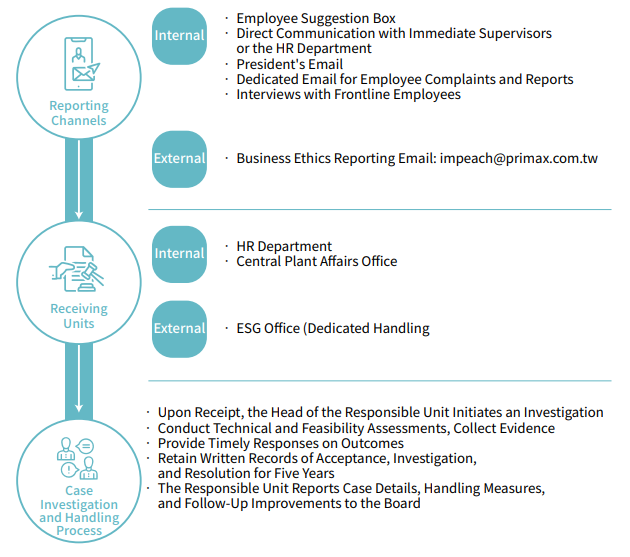
Identification of Material ESG Issues
Issues Collection and Consolidation
Prior to the ESG issues assessment, we first compiled the ESG issues that might pose some impact on the external economy, environment, human rights or company operations, in reference to sustainability standards and regulations (GRI, SASB, TCFD), ESG rating institutions (DJSI and MSCI, etc.), Rules Governing the Preparation and Filing of Sustainability Reports by TWSE Listed Companies, Issues of Concern to Stakeholders, Material Topics in the Upstream and Downstream Segments of the Value Chain (peers and major customers), Industry Characteristics and Relevant Regulations, and ESG advice and suggestions. In addition, during the year, Primax continued to integrate the 2024 corporate risk items, which include sustainability risks, climate-related risks, and other emerging risks, into the list of sustainability topics as sources for impact assessment. This approach ensures the completeness and relevance of the topics and helps align assessment results with global sustainability trends and investor priorities.
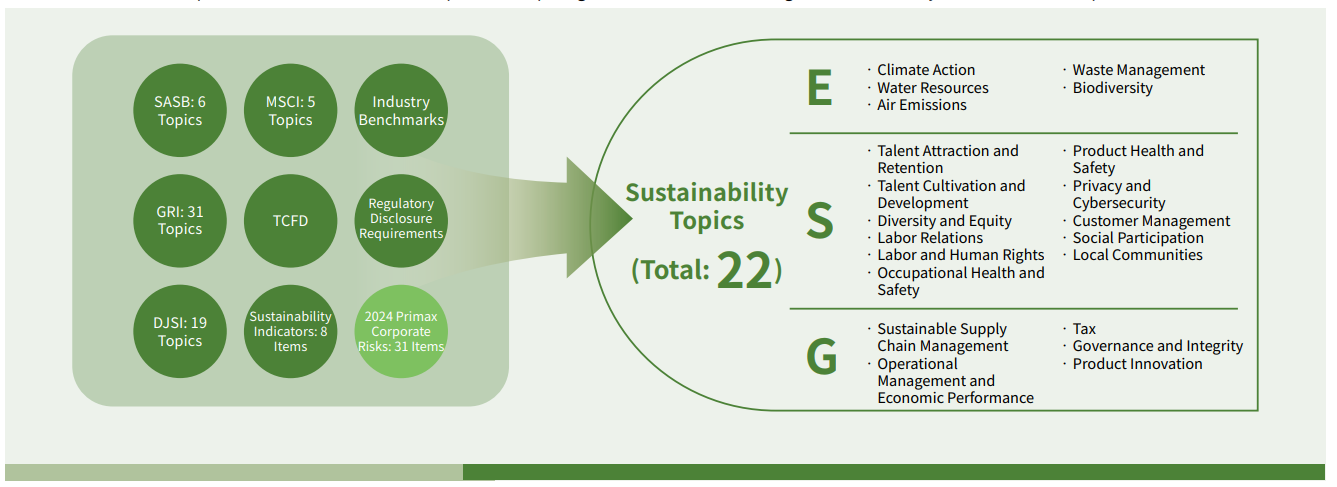
Material Issues Impact Assessment
The ESG Office of Primax and the top executives of each unit at Tymphany conducted a positive and negative impact scenario analysis of each ESG issue based on Primax Group's actual management status, and then assessed the impact posed by each ESG issue externally (economy, environment and population (including human rights thereof) and internally (Primax’s operations)based on the impact scenarios. When assessing the significance of impacts, the likelihood and severity (scale, scope, and remediation difficulty)/importance(scale, scope and likelihood) of each ESG issue shall be taken into consideration.Meanwhile, the level of concern questionnaire was also conducted with respectto the seven major stakeholders, and a total of 64 valid questionnaires were collected as a reference for determination of material ESG issues.
Material Issues Significance Ranking
After completing the impact assessment for each sustainability topic, both positive and negative impact scores were ranked separately. Thresholds were then established for each to serve as the basis for selecting material topics. In the 2024 assessment, 11 sustainability topics exceeded the threshold for positive impact, while 5 topics exceeded the threshold for negative impact.
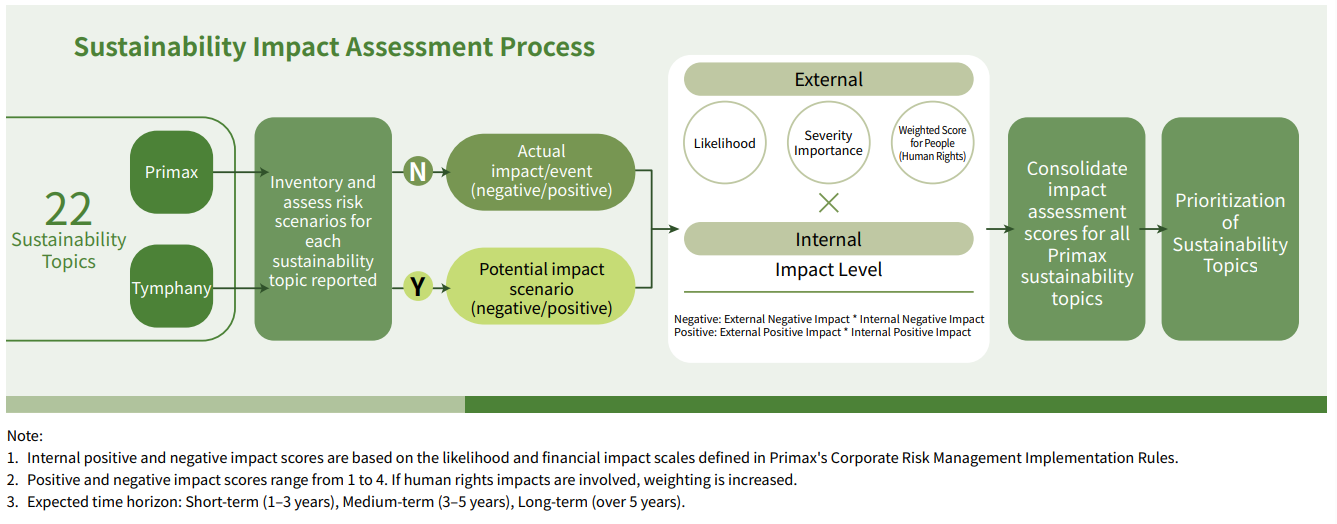
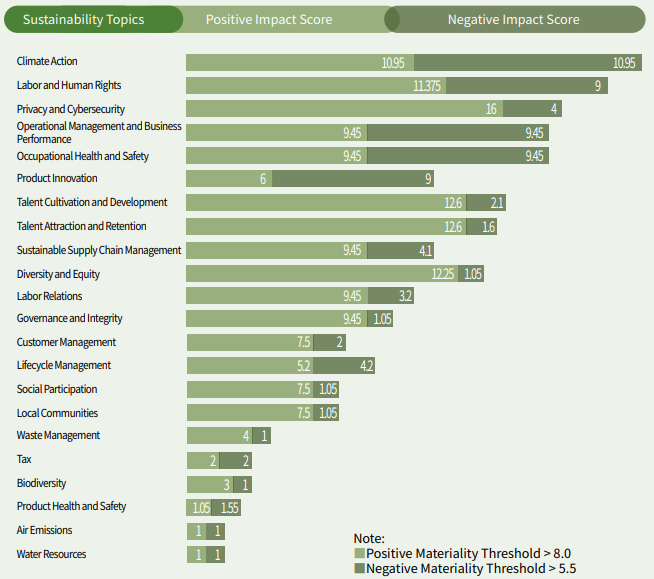
Determination of material ESG issues
Based on the prioritization results, the ESG Office, together with external sustainability consultants and consideration of stakeholder priority scores, identified topics exceeding the negative threshold (5.5) and positive threshold (8.0) as material topics for the year. These include Climate Action, Labor Rights, Privacy and Cybersecurity, Operational Management and Economic Performance, Occupational Health and Safety, Product Innovation, Talent Cultivation and Development, Talent Attraction and Retention, Sustainable Supply Chain Management, Diversity and Inclusion, Labor Relations, and Governance and Integrity, totaling 12 topics, with no significant changes compared to the previous year.

Response to and management of the impacts
